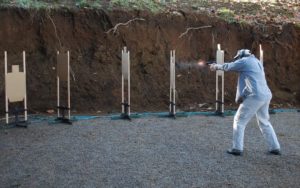
In objective terms when it comes to what most people would consider “mastery” level of skill; there are no “master” gunfighters. None, zip, zero.
All we have are some highly trained individuals who have also been in some gunfights.
This is because it takes thousands of hours to attain a mastery level of skill at something. Nobody has thousands of hours in actual gunfights. Our very best do have thousands of hours in training, and perhaps a few dozen hours in gunfights (Tier 1 Spec Ops).
So, the best we can do is draw upon the best training available proven to consistently result in superior outcomes in combat. You need to train the mechanical skills of marksmanship and weapon manipulation to unconscious competence (at least 5,000 repetitions). Stress inoculation training such Force on Force, high stress training environments (getting screamed at ala Drill Sergeant), high work (rappelling etc.), and water work (combat swim tests etc.) Other great training methods: video simulation, combat mindset lectures, tactical casualty care, shoot house and maneuver live-fire training.
How do you get 5,000 reps of something like drawing and firing a shot? Same way you eat and Elephant!
It takes under 10 minutes to practice 100 draws (10 sets of 10). Do this every weekday and you’ll be at 5,000 reps in only 10 weeks…and you have weekends off! Do it only 1x per week and you’ll still reach the unconscious competence level in under a year. If a year seems like a long time…are you any better this year at drawing than last year? If not, no time to start like now! Dry-fire is free and you don’t have to leave the house, don’t let another year go by without improving your chances of survival and protecting your family, no excuses.
-Stay Safe


